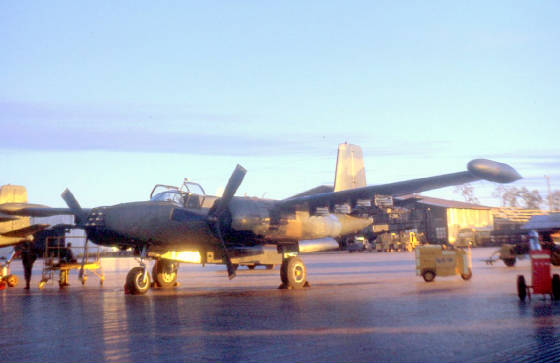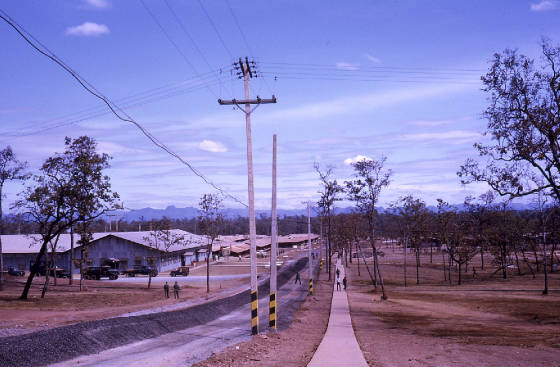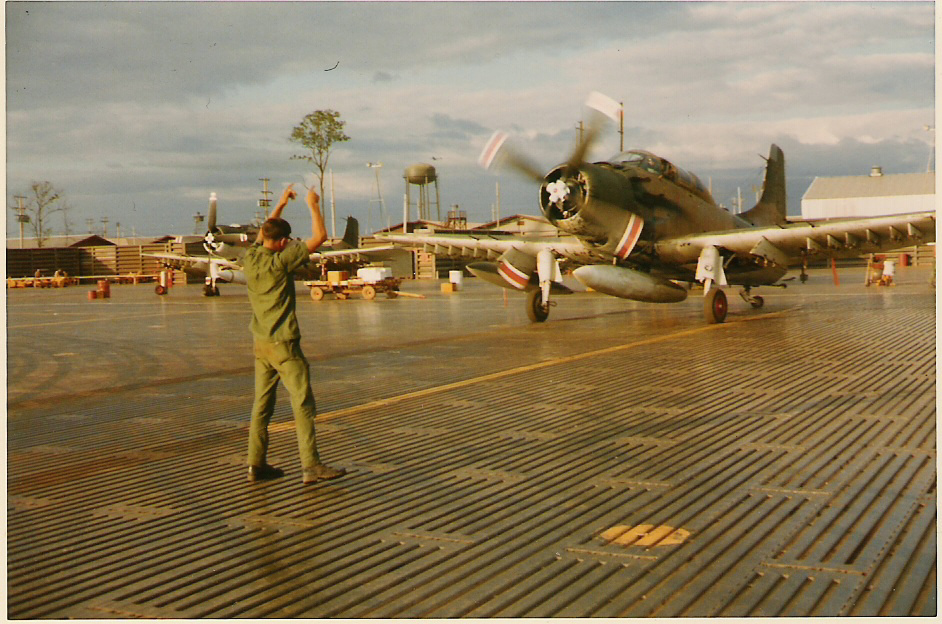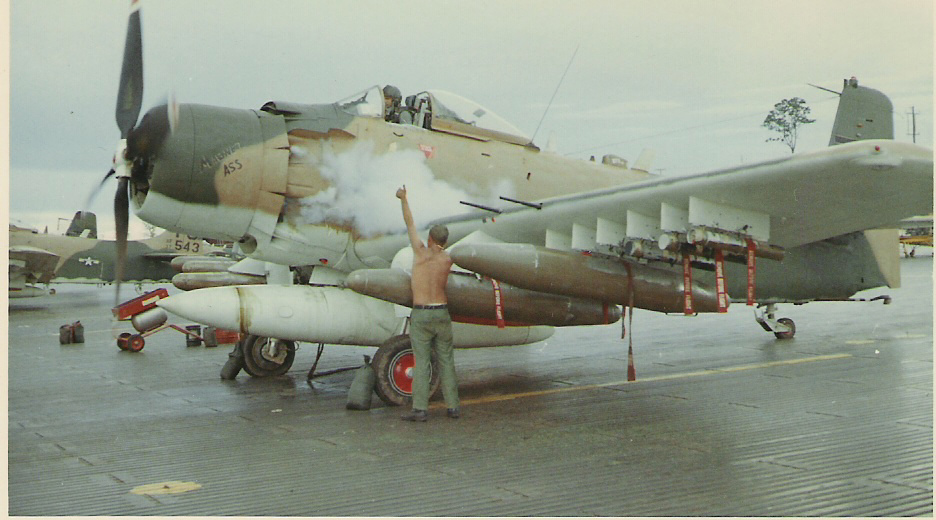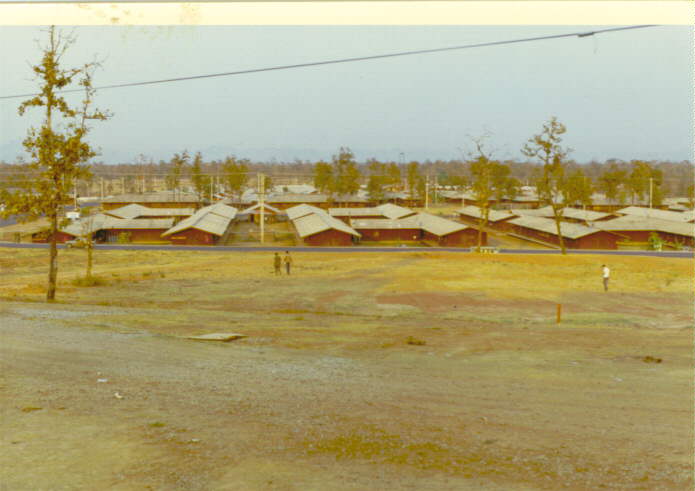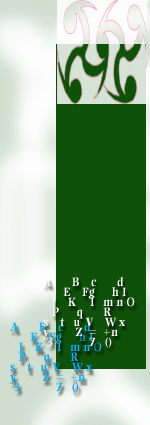
| Home | Return With Honor | Where Are You? | History of Isan | November 1962 | Det Prov.3 PARC | 56th Air Commando Wing | Communist Thai | The Zorros | 1st SOS | SOG MACV MLT 3 | 21st Special Operations Sq | 21st SOS Over The Fence | 21st SOS Pictures Page | Squadron VO-67 U.S.N. | 23rd TASS | 23rd TASS - Steel Tiger | Reports From The Trail | 23rd TASS Cricket Lament | 606th Special Operations Squadron | 606th - Over The Fence | Long Tieng - Alternate 20A | Alternate 20A Today | 119K Stinger Gunship | 56th Security Police Sq | 56th Security Police II | 6994 Security Squadron | Arrival: My First Day | The Gift | PCS: My Last Day | Son Tay Raid | 456th MMS | Back to The Jungle | NKP Map | Thare | Thare II | Operation Tailwind | Red Horse | NKP Pictures Page | NKP Pictures 1 | NKP Pictures 2 | NKP Pictures 3 | NKP Pictures 4 | NKP Pictures 5 | NKP Pics 6 | NKP Pics 7 | Favorite Links | Personal Web Site | ||||||||||||||
|
Nakhon Phanom During The Secret War 1962-1975 |
||||||||||||||
|
Close Up Map - link to Jim Henthorn's SEA Map Site THE WASHINGTON POST Wednesday, Sept. 25, 1968 The Secret Is Out: U.S. Base Isnt Secret Any More By Robert Kaylor NAKHON PHANOM, Thailand (UPI)- The U.S. Air Force is waging a secret and unconventional phase of the air war in Southeast
Asia from this base across the Mekong River from Laos. The American pilots involved wear midnight-black flight suits
and fly camouflaged twin-engine A26 bombers without identifying insignia. One of the seven U.S. bases in Thailand, theirs
alone is cloaked in secrecy. Inquiries about the mission of the U.S. 56th Special
Operations Wing at Nakhon Phanom are met with a terse "no comment" from U.S. officials. The base is less than 5 minutes flying time from areas
of technically neutral Laos where there has been fighting between Laotian forces and Communist North Vietnamese and Pathet
Lao forces. U.S. officials have disclosed that American pilots fly "armed
reconnaissance" missions in Laos at the request of the Laotian government to prevent Communist infiltration over the Ho Chi
Minh trail, which meanders several hundred miles down Eastern Laos. These flights are permitted to shoot back if fired upon. There never has been any official admission of U.S. warplane
support for ground troops in the country. But ground support is the mission for which most of the aircraft
at Nakhon Phanom are best suited. Despite the secrecy at the base, its activities are impossible
to hide from the local populace. U.S. commanders are certain that the Communist guerrillas have passed on word of its operations. The scope of combat in Laos has never reached the level of
that in South Vietnam, but the nation, about the size of Idaho, is strategically vital for both sides. Intelligence officers at the U.S. Embassy in Bangkok said there
are about 40,000 North Vietnamese troops in Laos assisting a force of about 29,000 Pathet Lao guerrillas, the Laotian equivalent
of the Vietcong in South Vietnam. Laotian officials give the same figures. The number of troops in the Laotian army is about
75,000. In addition there are about 10,000 neutralists now fighting on the government side. Control of the Ho Chi Minh trail running down Eastern Laos
is the centerpiece of the Laotian war because of its importance to North Vietnam as a lifeline, to its troops in South Vietnam. The trail network winds south from the Mu Gia pass in between
North Vietnam and Laos. Some routes follow Highway 9, a major east-west road across Laos leading to Khe Sanh and other areas
just below the demilitarized zone. Other routes run east from the province capitols of Saravane and Attopeu in southern Laos
to South Vietnams central highlands. In addition, arteries of the Ho Chi Minh trail wind south out
of Laos into Cambodia where they reach the Saigon area provinces of Tayninh, Phuoclong and Binhlong. U.S. Commanders take the position that missions by the men
of the 56th Special Operations Wing are an important countermove against North Vietnamese infiltrations and military
intervention in Laos. The pilots are proud of their elite status. "Yep, thats an A26," one of the fliers told a reporter touring
the Nakhon Phanom flight lines where rows of World War II-type attack bombers stood with bomb bay doors open, awaiting loading
crews. Clusters of machine guns bristled from the noses of the unmarked
bombers covered with swatches of green and black camouflage paint. The A26 is a relatively slow and easily maneuvered plane, making
it ideal as a close-in support craft. In addition to the A26s, the wing is equipped with unmarked
T28 fighter-bombers and C123 transport craft without insignia. There are O2 "Birddog" spotter planes, also unmarked. These
craft are used extensively in South Vietnam to direct artillery strikes on Communist units. U.S. airmen are careful to obey the "classified " status of
their mission here, but Laotian troops across the river in Laos itself make no secret about the support they have received
from American aircraft. One sergeant from a Laotian volunteer battalion, which fought
a battle Aug. 16 south of the village of Muong Phalane at the western edge of the Ho Chi Minh trail, credits U.S. planes with
killing almost all of the 58 North Vietnamese and Pathet Lao troops who died. In addition to the unmarked planes, there are other U.S. aircraft
that are clearly identified as American and fly more conventional missions. These include A1E skyraiders used for air cover in search and
rescue operations for downed pilots in North Vietnam and Laos and "Jolly Green Giant" helicopters which make jungle pickups.
Assignment at NKP Since then returned at my own expense to Thailand and Laos
in 2000, 2002, 2004, 2006, 2008-2023. Today the Thailand Laos Cambodia Brotherhood: WWW.TLC-Brotherhood.com our non profit 501(c) 3 organization conducts humanitarian
assistance through out Issan and Laos. We are almost six hundred strong and primarily consist of military men who served
in Southeast Asia during the war. Membership is open to all. Join in and help, your efforts will be appreciated!
What you did once, you can still do..... Our quarterly newsletter "The Mekong Express Mail" is available
for downloading from the bottom front page of the TLC web site in PDF format. I urge you to read a few of them to learn what
we have accomplished and become part of the continuing saga of involvement within Southeast Asia today. I am grateful to all who have supplied material for this Nakhon Phanom web site and proudly
host the site. Don't forget to sign the guest book and I hope you will get involved with the Thailand Laos Cambodia
Brotherhood! It's been a long time coming but...... Welcome Home!! John Sweet TUOC - 1987th Comm NKP 69-70
|
||||||||||||||
|
|






